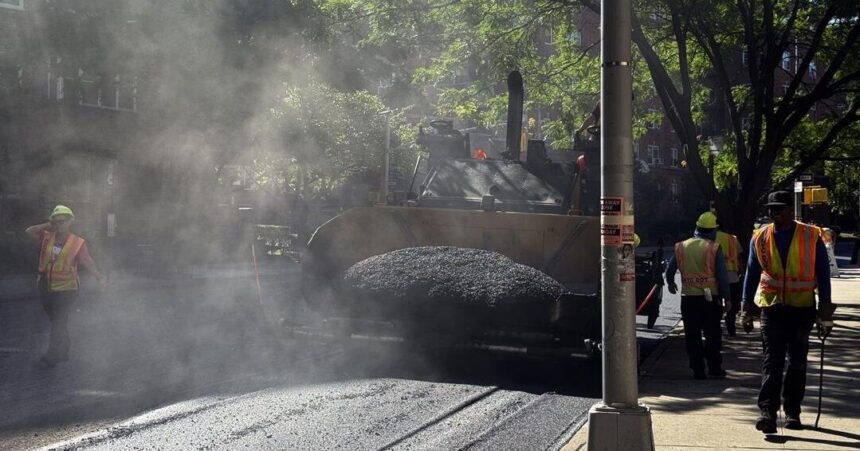McKINNEY, Texas — At the start of every work day, construction worker Charles Smith puts on the essentials: hard hat, safety glasses, reflective vest, and a small wristband for monitoring his vital signs during hot summer days in Texas.
The wristband monitors his heart rate, body temperature, stress level, and more. If it detects signs of overheating, it alerts him and his safety manager, prompting him to rest and hydrate. This device acts as an early warning system to prevent heat-related injuries and illnesses.
Employers across the U.S. are implementing technologies like this to protect employees from extreme heat due to climate change. In the absence of federal heat regulations for workers, some employers are taking the initiative to safeguard their workers from heat dangers.
“We can catch it before it happens,” said Seth Campbell, safety manager at Rogers-O’Brien construction company, which started using this technology last summer.
Other companies, like UPS, have equipped their workers with cooling hats, sleeves, and increased access to ice and water to combat the heat. Greenhouse companies have also adjusted workers’ schedules to mitigate heat exposure.
Heat Index calculator
Enter any temperature 80-112° Fahrenheit along with a relative humidity that is greater than 13. Calculate to see how the temperature feels to your body. Heat index values are for shady locations. If exposed to direct sunlight, the heat index value can be increased by up to 15°F.
While these measures help keep workers comfortable, more should be done to address the worsening heat dangers. Installing air conditioning, adjusting work schedules, and providing more breaks are effective ways to protect workers from heat-related illnesses.
Last summer, Rogers-O’Brien initiated a pilot program with SafeGuard technology to monitor workers’ vital signs. This program has proved effective in preventing heat-related incidents.
Smith’s wristband has alerted him and his safety manager to high body temperature and heart rate on hot days, prompting them to take necessary precautions. This technology has the potential to significantly benefit worker safety across industries.





